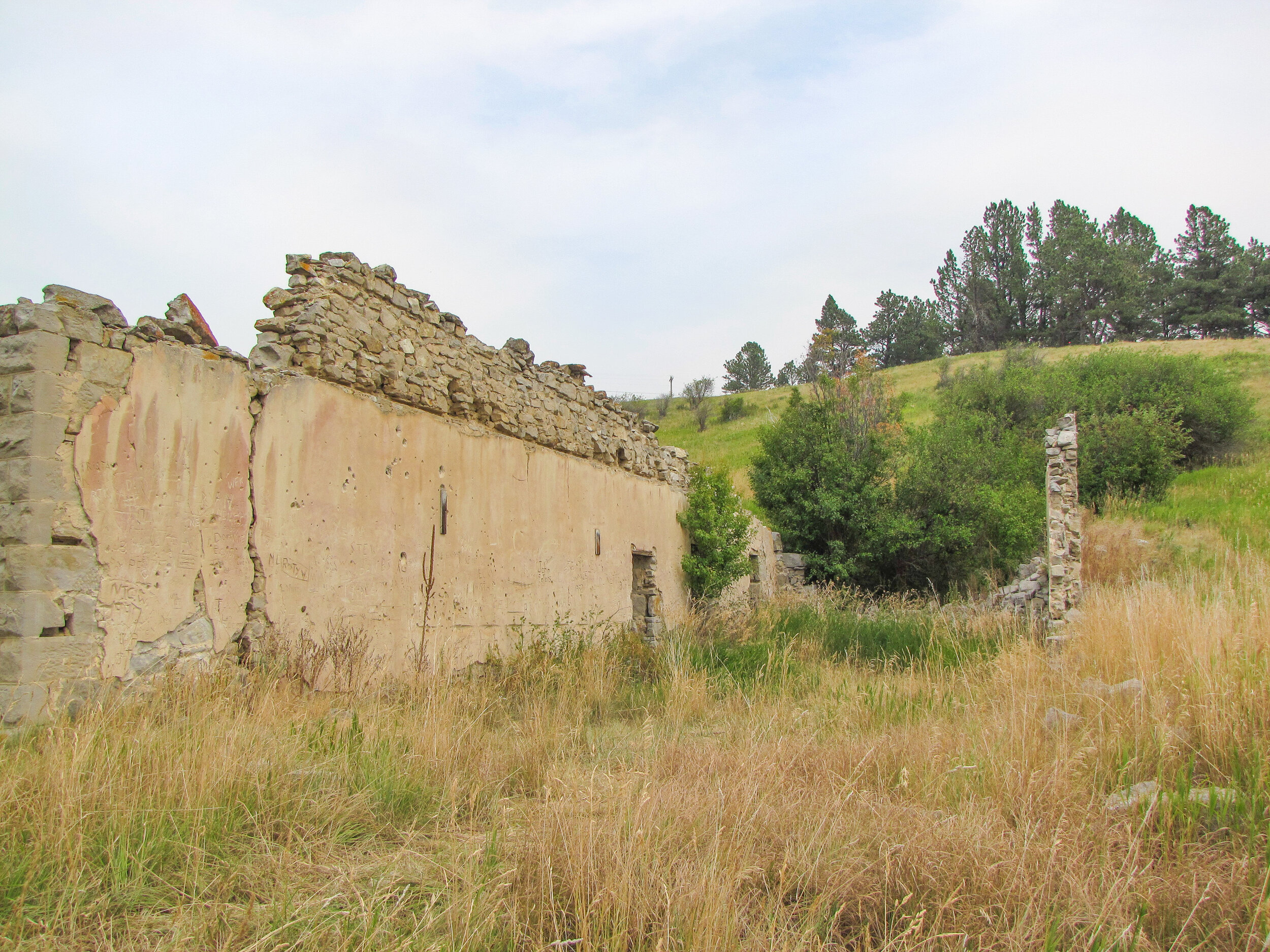Kendall Ghost Town in the North Moccasin Mountains
Moccasin Mountains
By Cathy Moser
Photography contributed by the Lewistown Library and Cathy Moser
Tucked within the forested North Moccasin Mountains lies central Montana’s best-preserved ghost town, Kendall. The town site makes a great destination for a scenic drive and a chance to wander through century-old stone buildings. A kiosk at each ruin provides historical information about the building and a picture of it during the town’s boom years.
By 1910, Kendall’s population, keeping pace with the cyanide mining operations of the Kendall Mine and the Barnes-King Mining Co., peaked at 1,500. The business district included two livery stables, restaurants, hotels, a butcher and tailor shop, bakery, assay office and several saloons. A two-story schoolhouse, the Jones Opera House and a hospital had also been constructed.
The story of Kendall starts with Harry T. Kendall, who was fascinated with the new technique of using cyanide to extract gold from low-grade ore. His first step was purchasing two North Moccasin gold mining claims in 1899. The following summer he and a crew of 25 men built a modest 50-ton steam-powered cyanide gold mill. As ore from the mine was fed to the mill, the jaws of a rock crusher reduced it to pea-sized particles, which were dumped into leaching tanks. A cyanide and water solution in the tanks penetrated the ore and liquified the gold within 80 to 96 hours. “Gold mud” was then scooped from the tanks, melted in a furnace, and poured into cast-iron molds, with solid gold bricks as the final result.
Legend has it that in November of 1900, Harry Kendall packed the first of his four gold bars into saddlebags and rode his horse to a Lewistown bank. When greeted by the teller, Kendall reached into his saddlebags and plunked the bars onto the counter. The teller fainted, and the bank president ushered Kendall into a private office. The gold bars were valued at $2,400, the equivalent of roughly $78,000 in today’s currency. Word of Kendall’s bonanza in the North Moccasin Mountains spread like wildfire and revitalized gold production in central Montana.
Kendall became a millionaire after selling his operation in 1901. He left Montana and settled in California.
“The story of Kendall starts with Harry T. Kendall, who was fascinated with the new technique of using cyanide to extract gold from low-grade ore. His first step was purchasing two North Moccasin gold mining claims in 1899”
By October of 1901, the Kendall gold camp had 200 citizens and a post office. The next year a quarry south of the North Moccasin Mountains began supplying the sandstone needed by stonemasons to construct magnificent stone buildings. The two-story J.R. Cook building housed the Kendall Investment Company and the First Bank of Kendall, which included a square sandstone vault. The T.R. Matlock General Merchandise Store offered the usual dry goods, and it also stocked “fancy” groceries, “notions” and “gent’s furnishings.”
Methodist, Presbyterian and Catholic denominations were all present in Kendall’s earliest days. Circuit-riding clergy conducted services in public buildings. In 1907, the Scotch Presbyterian, the largest denomination, commissioned stonemasons to build a two-story church and parsonage. The other denominations also held worship services there. The Presbyterian manse was the last of 11 stone buildings constructed in Kendall. Wooden buildings accounted for the rest of the town’s structures.
By 1910, Kendall’s population, keeping pace with the cyanide mining operations of the Kendall Mine and the Barnes-King Mining Co., peaked at 1,500. The business district included two livery stables, restaurants, hotels, a butcher and tailor shop, bakery, assay office and several saloons. A two-story schoolhouse, the Jones Opera House and a hospital had also been constructed.
During the first decade of the 20th century, Kendall flourished as Montana’s richest gold mining town and the last of any consequence. With its combined mines yielding more than $35 million in gold, the town was also one of the world’s most prosperous.
By the end of 1912, stores of good gold ore in the area started to play out. Fires burned parts of the business district in 1908 and 1910. The Milwaukee Railroad’s decision to build a branch line from Lewistown to the flourishing town of Hilger in 1911 further doomed Kendall.
“The historic town site hasn’t a habitable structure today, only the gaunt stone ruins. ”
The town slowly emptied out and in 1921, with the closing of the Barnes King Mine, the town of Kendall had no reason to continue. In all, approximately 500,000 ounces of gold were extracted from the mines over a 20-year period.
Two of three stone structures that survive at Kendall are the T.R. Matlock Store and the bank vault. They stand along old McKinley Avenue, named in honor of President William McKinley. At the base of a hillside, in the shadows of aspen and pine trees, the walls of The First Presbyterian Church crumble.
The historic town site hasn’t a habitable structure today, only the gaunt stone ruins. Modern additions include picnic tables and concrete fire pits for barbecuing in the pretty setting of aspen and evergreens.
Breakout box: How to get to the Kendall ghost town: From Lewistown, travel north on Highway 191. After going 18 miles, watch for the North Kendall Road sign on the left just before entering Hilger. Turn left onto North Kendall Road. Six miles of gravel road leads to Kendall. Dogs are welcome.






